I'm a beginner at ggplot, and I tried to use it to draw some timeserie data. I want to draw bound_transporter_in_evolution.mean as a function of time, in different conditions where the attribute p_off (float) varies.
p4 <- ggplot(data=df, aes(x=timesteps.mean)) +
geom_line(aes(y=bound_transporter_in_evolution.mean, color=p_off)) +
xlab(label="Time (s)") +
ylab(label="Number of bound 'in' transporters")
ggsave("p4.pdf", width=8, height=3.3)
I get the following plot:

I expected this result, but with a line instead of points:

Thank you

